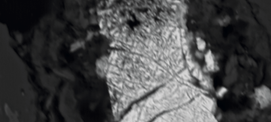Fire and Water: Geometallurgy and Extractive Metallurgy
There is no doubt that mineralogy, texture, and microfabric, as primary characteristics of an ore, affect mineral processing operations. Their direct effects on extractive metallurgical processes and the associated optimization potential, however, are less well documented. Here, we examine the status of geometallurgical approaches in extractive metallurgy by focusing on the effects of primary ore characteristics in hydrometallurgical and pyrometallurgical processes. Two selected case studies illustrate the linkages. Using quantitative data analytics on ores and concentrates, the possibilities for optimized and sustainable metal extraction and waste valorization are discussed.
Fire and Water: Geometallurgy and Extractive Metallurgy Read More »











